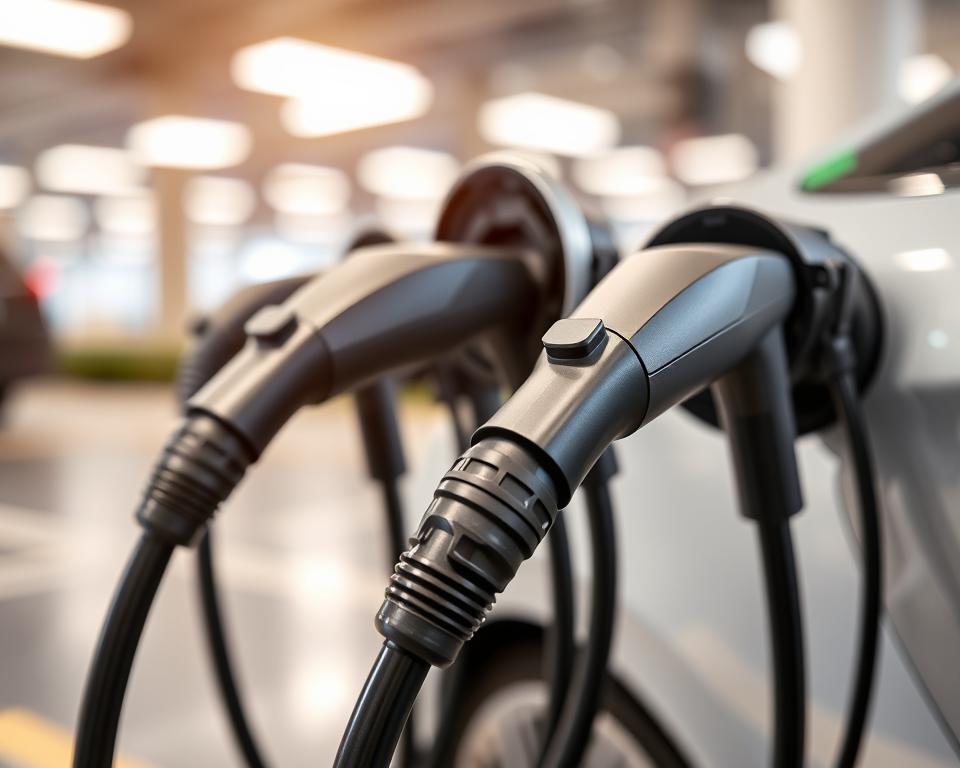Your Complete Sustainable Precious Metals Handbook
Were you aware that electronic waste throws away over $60 billion of precious metals annually? This staggering figure underlines the critical role of precious metal recycling. It’s not just good for our economy but also for the environment. When we recover gold, silver, platinum, and palladium, we reduce pollution and conserve resources.
Companies like Dongsheng Metal Trading are leading the charge towards sustainability. They guarantee that valuable metals return to use instead of filling dumps. This precious metal recycler approach is key to eco-friendly recycling and sustainable practices.
Fundamental Learnings
- Each year, e-waste discards over $60 billion in precious metals.
- Precious metal recycling reduces environmental impact and conserves resources.
- Gold, silver, platinum, and palladium top the list of valuable metals.
- Green recycling methods are essential for a sustainable future.
- Companies like Dongsheng Metal Trading specialize in metal recycling.
Exploring Precious Metals and Their Worth
Naturally scarce metallic elements called precious metals draw interest from industries and investors. Gold, silver, platinum, and palladium stand out for their distinct qualities. Notable traits are excellent conductivity, corrosion resistance, and rarity. Given the resource-intensive mining and processing, recycling precious metals is essential.

Market demand and each metal’s properties drive its value. Recovering metals is key to keeping the supply chain alive. It also reduces environmental impacts associated with mining activities. Through exhaustive recycling processes, these metals can be restored to their original state. Such efforts save limited resources and create economic gains.
Precious Metals Explained
These metals’ special traits lend themselves to diverse applications. Scarcity plus special properties drive their economic importance. Notable examples are:
- Au: Valued for its beauty and resistance to tarnish.
- Ag: Celebrated for its adaptability and conductivity.
- Pt: Esteemed for its toughness and catalyst role.
- Pd: On the rise in automotive and tech industries.
Benefits of Precious Metal Recycling
The practice of recycling precious metals has emerged as a vital component for sustainability. It saves scarce materials and sharply cuts mining’s eco-footprint. Here are some benefits:
- Lessening of habitat destruction from mining.
- Lower energy consumption compared to extracting new metals from the earth.
- Contribution to a circular economy by reintroducing materials into production cycles.
- Opportunity for profit by recovering valuable metals.
Why Precious Metal Recycling Matters
Metal recycling brings both green and economic gains. Highlighting these advantages is key to reducing our ecological footprint. Additionally, it fuels market growth and resilience.
Environmental Benefits
The environmental benefits of recycling precious metals are significant. When we recover metals from e-waste and scrap, landfill volume drops. That cuts new mining needs and saves resources.
It lessens mining impacts, including ecosystem harm and contaminants. A focus on metal recovery moves us toward real sustainability.
Financial Gains
Financial perks of recycling are just as strong. Recovering metals cuts production expenses. This allows industries to use reclaimed metals instead of new ones.
This shift creates jobs in recycling facilities and boosts market stability as demand for recycled metals grows. Using these financial benefits, companies can improve profits. They also contribute to a greener economy.
Steps in Metal Recycling
The precious metal recycling process is complex, involving several stages to ensure maximum efficiency. First, scrap electronics, jewelry, and industrial waste are gathered. Next comes sorting, cleaning, and testing to assess metal content and worth.
Recovery Steps
This systematic approach is vital for effective metal recovery. Each step is designed to optimize the yield of precious metals. Sorting separates metals by type and purity. Cleaning strips away impurities that impede extraction. Analysis identifies the concentration of precious metals, guiding the choice of recycling techniques.
Recovery Methods
High-tech methods are used to maximize metal retrieval. Thermal reduction, using high temperatures to separate metals from ores, is a key method. Melting refines and aggregates metals, while wet chemical processes are used for delicate separations. Companies like Dongsheng Metal Trading use these methods to boost efficiency and maximize returns in the precious metal recycling process.
Types of Precious Metals that can be Recycled
Scrap recovery benefits both Earth and economy. Many precious metals can be recycled, benefiting both the economy and the planet. Awareness of recyclable metals guides consumers and companies.
Gold, Silver, and Platinum
Familiar precious metals include gold, silver, and platinum. You’ll see them in rings, currency, and industrial parts. Recycling gold is common due to its high value and demand. Silver recovery matters too, thanks to its role in imaging, tech, and solar.
Platinum, though less common, is valuable, mainly in catalytic converters.
E-Waste Metals
E-waste metals present special recovery opportunities. Smartphones, laptops, and tablets contain rare metals like palladium and indium. Recovering such metals diminishes e-waste and yields vital materials.
The need to recycle these metals is critical. Sectors strive to cut waste and boost recycling efficiency.
Who Gains from Metal Recycling?
Metal recovery underpins major sectors by supplying reclaimed resources sustainably. Electronics, which embeds metals in gadgets, gains the most. Aerospace and medical sectors also depend on these metals for critical components. Examining industry recovery uncovers eco- and economic advantages.
E-Waste Sector
The electronics industry leads in precious metal recycling due to the abundance of valuable metals in devices like smartphones and computers. Rapid technological advancements have led to a significant increase in electronic waste. Hence, recovering metals like gold, silver, and palladium is crucial. That saves resources and cuts mining carbon footprints.
Companies are increasingly focusing on recycling to meet global sustainability and waste reduction goals. This shift supports the ongoing need for resource conservation and environmental protection.
Aerospace & Medical
Recycling precious metals matters for aerospace and healthcare, given their reliance on them. Durable, corrosion-resistant alloys are used in aircraft and medical tools. Recovering them cuts costs and meets green regulations.
They recognize that recycling offsets material scarcity. Plus, it boosts efficiency, cementing recycling as a sustainability strategy.
How to Choose a Metal Recycler
Locating reliable recycling partners ensures great results. Be sure to quiz them on their methods. Pricing models and processes make a big difference. Reviewing offerings lets you select wisely.
Key Questions for Recyclers
- Can you share your precious-metal recovery accreditations?
- What techniques do you use for each metal type?
- Which recovery percentages do you achieve for each metal?
- Can you detail your fees and any surcharges?
- Can you provide references or testimonials from previous clients?
Evaluating Offers
When searching for a recycler, it’s vital to compare different companies based on their services. Use a table to line up these factors:
| Company Name | Recovery Rate (%) | Processing Fee ($) | Turnaround Time (Days) |
|---|---|---|---|
| Recycling Co. A | 95 | 50 | 7 |
| Recycling Co. B | 90 | 45 | 5 |
| Recycling Co. C | 92 | 55 | 10 |
Comparing options ensures you get top value and service. That way, you maximize returns and maintain quality.
Precious Metal Recycling: Your Eco-Friendly Guide
Understanding how recyclers operate is key for those interested in precious metal recycling. They handle all stages, from gathering to final refining. Such management secures peak resource use and profit.
Recycler Operations
Advanced workflows—assay, separation, smelting—unlock metal value. First, they gather scrap from multiple origins. Next, they employ precise methods to sort metals. Finally, they refine each batch to recover gold, silver, platinum, etc.
It optimizes yield while advancing environmental goals. It’s fundamental to building a sustainable future.
Selecting Your Ideal Recycler
Key criteria matter when choosing a recycler. Begin by checking their green credentials. In today’s market, a commitment to sustainability is essential. Next, review their service range—from pickup to refining.
Your budget will influence your choice. Get quotes to compare different options. Companies like Dongsheng Metal Trading offer customized solutions for various industries. They are a reliable choice for specific recycling needs.
Types of Recycling Facilities
Recovery facilities are central to green waste solutions. There are specialized centers for different metals and materials. Understanding these facilities improves access to recyclers and their services. That supports firms and ecosystems alike.
Types of Facilities Available
Metal recycling facilities vary widely in their operations. Some yards recover gold and silver; others accept all metal waste. Here are a few common types:
- Metal Scrap Yards: Typically focus on general metal waste, including ferrous and non-ferrous metals.
- Precious Metal Recovery Companies: With a focus on high-value materials such as gold, silver, and platinum, these companies offer refined processing techniques.
- E-Waste Recycling Centers: Specialize in recovering metals from discarded electronics, capitalizing on the valuable components often found in these devices.
Choosing Facility Locations
Proximity to recyclers cuts logistical hurdles. Companies should evaluate haulage considerations. Key access factors include:
| Factor | Description |
|---|---|
| Distance | Nearby recyclers reduce haul time and expense. |
| Partnerships | Connections with nearby facilities speed up recycling. |
| Services Offered | Understanding the specific services of metal recycling facilities helps businesses select appropriate partners. |
Choosing appropriate centers and easy access drives recovery efficiency.
E-Waste Recycling & Metal Recovery
Discarded electronics threaten the environment. Discarded devices often contain precious metals that can be recovered through recycling. That underscores viewing e-waste as a metal source.
Electronic Precious Metals
Many electronic devices hold small amounts of precious metals like gold, silver, and palladium. You’ll find them in components such as:
- Circuit boards
- Connectors and ports
- Capacitors and resistors
- Battery terminals
From phones to TVs, electronics pack precious metals. Recycling lets us reclaim and repurpose those metals.
The Importance of E-Waste Recycling
Recovering e-waste metals safeguards the environment and reclaims materials. It reduces landfill waste and saves natural resources. Key perks include:
- It lowers pollution risks tied to discarded electronics
- It cuts down on carbon emissions through eco-friendly practices
- It fuels a circular economy by feeding materials back into manufacturing
Promoting e-waste recovery advances resource stewardship. It’s essential for the well-being of future generations.
What’s Next in Metal Recycling?
Metal recycling is evolving, spurred by tech advances and green initiatives. Facing resource limits, recyclers embrace new methods. By integrating novel processes, they pave the way forward.
Trends in Sustainable Recycling
Modern green recycling strives to cut waste and eco-damage. Firms now use bio-packaging and low-energy methods. These changes align with global sustainability objectives, pushing industries towards more responsible and planet-friendly behaviors.
New Metal Recovery Tech
New methods in recovery enhance recycling performance. New technologies, such as automated sorting and hydrometallurgical extraction, enhance recovery rates. They ramp up yields and shrink eco-footprints, advancing metal recycling.
Starting a Precious Metal Recycling Venture
Building a metal recycling enterprise calls for thorough planning and industry knowledge. Founders need a roadmap, regulatory know-how, and solid groundwork. This includes conducting extensive market research and identifying target clients. Securing licenses and legal compliance is crucial for long-term viability.
Launching Steps
Setting up a precious metal recycling venture requires several essential steps:
- Research the market to grasp demand and competition.
- Develop a detailed business plan outlining goals and strategies.
- Purchase the right gear for your recycling operations.
- Obtain capital via loans or investors.
- Obtain vital permits and licenses for legal operation.
- Launch marketing to attract clientele.
Regulatory & Certification Needs
Understanding legal aspects when starting a precious metal recycling business is critical. Meeting environmental rules protects your operation and the planet. Key considerations include:
- Securing business certification from relevant authorities.
- Following all levels of waste and recycling regulations.
- Ensuring all employees are trained on safety protocols and procedures.
Final Thoughts
Precious metal recycling is essential for preserving natural resources and improving environmental health. It allows individuals and businesses to lessen waste’s impact on our planet. That reclaimed metal cuts mining demand and spawns recycling jobs.
Metal recovery delivers both eco and economic upsides. Partnering with companies like Dongsheng Metal Trading ensures a commitment to eco-friendly practices. That partnership bolsters circular models for recyclers and buyers alike.
The journey to a sustainable future depends on collective action in recycling precious metals. Increased awareness builds a culture of green consumption and care. Adopting these practices will benefit us now and secure a greener future for generations to come.


